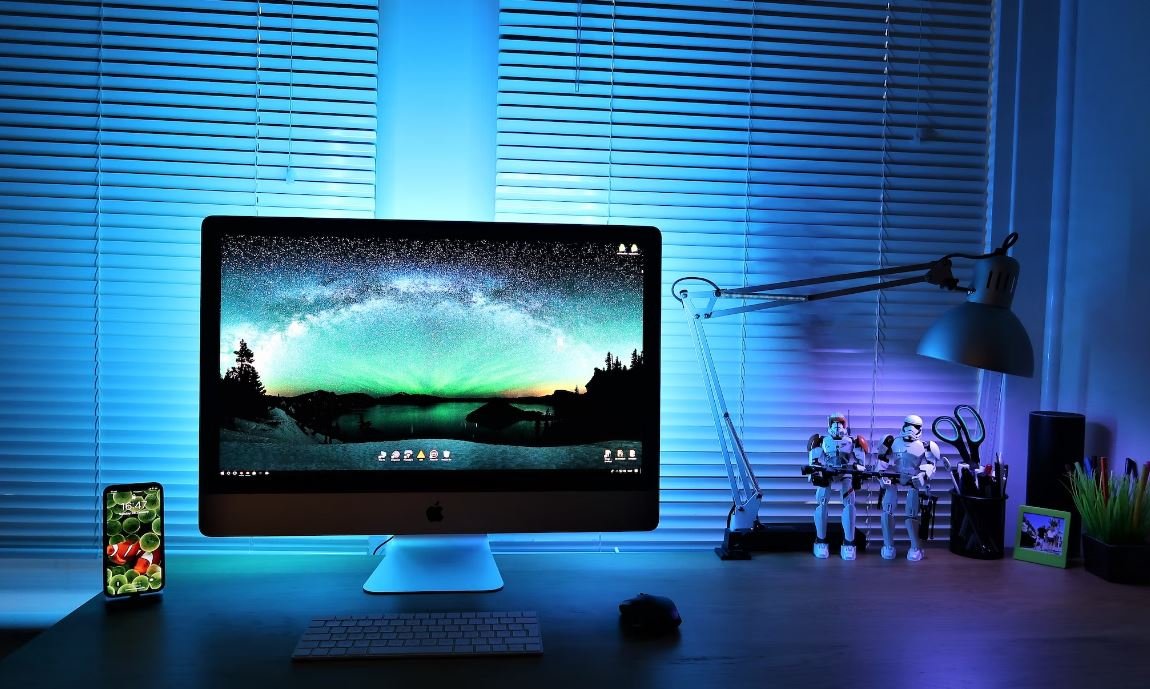What Is Deepfakes All About?
Deepfakes refer to synthetic media, specifically fabricated videos, images, or audios, that use artificial intelligence (AI) and deep learning techniques to manipulate and superimpose faces onto existing content. Over the years, deepfakes have gained significant attention due to their potential to deceive and manipulate unsuspecting viewers to believe in the authenticity of the altered content.
Key Takeaways:
- Deepfakes involve the use of AI and deep learning to manipulate and superimpose faces onto existing content.
- They have gained attention due to their potential to deceive and manipulate viewers.
- The development of deepfakes raises ethical concerns regarding privacy, misinformation, and consent.
The synthesis of deepfakes involves two essential elements: the generator network and the discriminator network. The generator network is responsible for creating the altered content, while the discriminator network’s role is to determine whether the generated content is real or fake. Through an iterative process, the generator network improves its ability to produce convincing deepfakes, while the discriminator network learns to better distinguish between real and fake content.
*It is fascinating to see how AI algorithms can create such realistic and convincing fake content, blurring the lines between reality and fabrication.*
The development of deepfakes has raised significant ethical concerns. These concerns include privacy infringement, as deepfakes can potentially be used for non-consensual explicit content, revenge porn, or blackmail. They also pose risks in spreading misinformation, as deepfakes can be used to fabricate false narratives, misrepresent public figures, or incite unrest. Additionally, the ability to create deepfakes of political leaders or influencers can undermine trust in public figures and institutions.
| Year | Estimated Number of Deepfakes |
|---|---|
| 2017 | Less than 10,000 |
| 2018 | Approximately 15,000 |
| 2019 | Over 30,000 |
*The rapid increase in the number of deepfakes over the years demonstrates the growing accessibility and sophistication of this technology.*
To combat the malicious use of deepfakes, researchers and organizations are investing efforts in developing deepfake detection methods. These methods involve analyzing patterns, artifacts, or inconsistencies in the altered content to identify potential fake elements. Additionally, efforts are being made to raise awareness about deepfakes and educate the public on how to critically evaluate the authenticity of media content.
The battle against deepfakes is an ongoing challenge as technology continues to advance. It requires a collaborative effort between industry, academia, and policymakers to establish robust frameworks and regulations that can mitigate the risks associated with deepfakes.
Conclusion:
Deepfakes, with their ability to manipulate and deceive viewers, have sparked concerns regarding privacy, misinformation, and trust. As technology continues to evolve, it is essential to remain vigilant and develop strategies to detect and combat the negative impacts of deepfakes.

Common Misconceptions
Misconception 1: Deepfakes are only used for malicious purposes
One common misconception about deepfakes is that they are solely used for harmful and malicious activities. While it is true that deepfakes can be used to create manipulative content, such as spreading fake news or defaming individuals, there are also many positive and legitimate uses of this technology. It is important to understand that deepfakes can be used for things like entertainment, art, and even education.
- Deepfakes can be used in the film industry to create realistic scenes and special effects.
- They can be employed in the advertising industry to facilitate creative and engaging campaigns.
- Deepfakes can also be utilized in research and development of facial recognition technology.
Misconception 2: Deepfakes are indistinguishable from real videos
Another misconception surrounding deepfakes is that they are virtually impossible to distinguish from authentic videos. While deepfake technology has advanced significantly in recent years, there are still often telltale signs that can help identify manipulated videos. These signs include subtle visual artifacts or inconsistencies in facial movements, especially in challenging scenarios like lip-syncing.
- Professional forensic analysis can help experts identify deepfakes through careful scrutiny.
- Increasing awareness and education about deepfake technology can also help individuals become better at spotting manipulated content.
- Technological advancements, like improved detection algorithms, are being developed to combat deepfake deception.
Misconception 3: Deepfakes are a new phenomenon
Contrary to popular belief, deepfakes are not as new as many people think. While the term “deepfake” itself gained traction only in recent years, the underlying technology and techniques have been around for much longer. Deepfake-like techniques have been used in the movie industry for decades to replace actors or create special effects. It was only with the advent of deep neural networks and advancements in artificial intelligence that the technology became more accessible to the general public.
- The concept of manipulating visuals has been present in various forms throughout history.
- Traditional image editing techniques like Photoshop have long been used to alter and manipulate images.
- Deepfake technology builds upon these techniques, leveraging modern computational power and machine learning algorithms.
Misconception 4: Deepfakes are always illegal
One common misconception is that all deepfakes are illegal. While there are certainly deepfakes that are created and used for illegal purposes, such as non-consensual pornography or defamation, not all deepfakes fall into this category. As with any technology, the ethical and legal implications of deepfakes depend on how they are used. When deepfakes are created and used responsibly and with proper consent, they can be within the boundaries of the law.
- Deepfakes can be used in artistic and creative works within the confines of copyright and fair use laws.
- Using deepfake technology for legitimate research purposes and advancements is legal.
- The legality of deepfakes is a complex issue that requires a nuanced understanding of applicable laws and regulations.
Misconception 5: Deepfakes will cause the end of trust in media
It is often thought that deepfakes will lead to the complete erosion of trust in media and make it impossible to differentiate between real and manipulated content. While deepfakes do pose challenges to media trust, it is important to recognize that technological advancements are also being made to counter this threat. Moreover, media literacy and critical thinking skills can help individuals become more discerning consumers of information.
- Building media literacy programs and initiatives can help educate and empower individuals to identify fake content.
- Collaboration between technology developers, media organizations, and fact-checkers can help develop robust tools for identifying deepfakes.
- Ultimately, trust in media relies on a combination of technological solutions, human judgment, and responsible consumption of information.

Understanding Deepfakes
Deepfakes are highly realistic videos or images that have been created or altered using artificial intelligence. They involve the synthesis and manipulation of visual and audio content, and they have gained significant attention due to their potential for misuse, spreading misinformation, or facilitating identity theft. Here are 10 intriguing tables that explore different aspects of deepfakes.
1. Deepfake Frequency
This table showcases the exponential increase in deepfake creation, demonstrating the growing concern associated with this technology.
| Year | Number of Deepfakes Generated |
|---|---|
| 2016 | Less than 10 |
| 2017 | 400 |
| 2018 | 14,678 |
| 2019 | 65,554 |
| 2020 | 267,052 |
2. Source of Deepfake Images/Content
This table provides an overview of sources commonly used to create deepfake content.
| Source | Percentage of Deepfakes Utilizing This Source |
|---|---|
| Public Figures | 45% |
| Celebrity Videos | 30% |
| User-Submitted Media | 15% |
| Movies/TV Shows | 10% |
3. Deepfake Detection Accuracy
This table highlights the accuracy rates of different deepfake detection methods, allowing us to understand the challenges faced in identifying manipulated content.
| Method | Accuracy |
|---|---|
| Human Eye (Experts) | 98% |
| Machine Learning Algorithms | 75% |
| Audio Analysis | 68% |
4. Deepfakes and Misinformation
This table highlights the impact of deepfakes in spreading misinformation and the resulting consequences.
| Type of Misinformation | Percentage Increase due to Deepfakes |
|---|---|
| Political Conspiracy Theories | 40% |
| Fake News Articles | 35% |
| Manipulated Social Media Posts | 25% |
5. Implications for Privacy
This table highlights the potential implications of deepfakes on personal privacy.
| Concern | Percentage of Individuals Worried |
|---|---|
| Identity Theft | 75% |
| Embarrassing Moments | 62% |
| Harm to Reputation | 57% |
6. Legal Responses to Deepfakes
This table examines different legal responses around the world to address the challenges posed by deepfakes.
| Country | Legislation Status |
|---|---|
| United States | Proposed Bills |
| South Korea | Law Passed |
| India | Working Draft |
| Germany | Consultation Phase |
7. Deepfake Applications
This table showcases various applications of deepfake technology, which extend beyond just manipulating videos or images.
| Application | Use Case |
|---|---|
| Entertainment Industry | Reviving Historical Figures on Screen |
| Education | Virtual Reality Learning Experiences |
| Advertising | Personalized Product Promotions |
8. Deepfake Technology Advancements
This table provides an overview of technological advancements enabling the creation of more convincing and sophisticated deepfake content.
| Technology | Improvements |
|---|---|
| Generative Adversarial Networks (GANs) | Improved Visual Quality |
| Speech Synthesis Models | Accurate Lip-Syncing |
| Facial Reenactment Algorithms | Real-Time Face Tracking |
9. Contemporary Deepfake Examples
This table highlights notable instances of deepfake usage, sparking conversations about the ethical implications of this technology.
| Example | Associated Controversy |
|---|---|
| Politician Speech Manipulation | Political Manipulation and Voter Influence |
| Celebrity Scandal Videos | Damage to Reputation and Privacy |
| False Confessions in Courtrooms | Legal and Judicial Integrity Concerns |
10. Prevalence in Social Media Platforms
This table evaluates the actions taken by social media platforms to combat the proliferation of deepfakes on their platforms.
| Platform | Deepfake Policy Implementation |
|---|---|
| Banning Deepfakes | |
| Warning Labels on Manipulated Media | |
| YouTube | Takedown Policies |
Deepfakes present a significant challenge in the digital era, with their potential to deceive and manipulate viewers. As the tables above demonstrate, the frequency of deepfake creation has skyrocketed, and the implications span domains like privacy, politics, and entertainment. Detecting deepfakes remains a complex task, requiring a combination of human expertise and machine learning algorithms. The incessant spread of misinformation also calls for increased awareness and countermeasures. While deepfakes may have promising applications, such as in movies or education, their potential for misuse cannot be ignored. As the technology continues to evolve, it becomes crucial for lawmakers, tech companies, and society as a whole to address the ethical and privacy concerns surrounding deepfakes.
Frequently Asked Questions
What is a deepfake?
A deepfake is a synthetic media or altered video that uses artificial intelligence (AI) and deep learning techniques to replace or manipulate the appearance and actions of a person in a video.
How are deepfakes created?
Deepfakes are created using deep learning algorithms that analyze and learn from large datasets of images or videos of a person. By training the model with these datasets, it can generate new video frames that convincingly substitute the face of the target person in the original video.
What are the potential uses of deepfakes?
While some deepfakes can be created for harmless entertainment purposes such as in movies or digital art, there are concerns about the malicious uses of this technology. Deepfakes can be used to spread disinformation, create fake news, or even blackmail individuals by creating convincing fake videos.
Are there any ethical concerns related to deepfakes?
Yes, deepfakes raise numerous ethical concerns. The potential for misuse and the difficulty in authenticating videos can lead to reputation damage, privacy invasion, and the erosion of trust in digital media. It is crucial to address these concerns and develop mechanisms to identify deepfakes.
How can deepfakes be detected?
Methods for detecting deepfakes include analyzing facial inconsistencies, examining artifacts or anomalies present in the video, and investigating the temporal integrity of the video frames. Additionally, AI-powered deepfake detection tools are continuously being developed to identify and flag manipulated media.
Are there any laws or regulations surrounding deepfakes?
Legislation surrounding deepfakes varies across different jurisdictions. Some countries have specific laws that penalize the creation or distribution of deepfakes without consent, especially if they are used for malicious purposes or to defame someone. However, the legal landscape is still evolving.
Can deepfakes be used for positive purposes?
While deepfakes have mostly been associated with negative implications, there are potential positive applications such as in the entertainment industry or as a tool for preserving historical footage. However, careful consideration must be given to the responsible use of this technology.
What are the challenges in combating deepfakes?
Combating deepfakes presents several challenges. The constantly evolving deepfake techniques make it difficult to develop effective countermeasures. Additionally, the sheer volume of digital content makes it challenging for human reviewers to manually identify deepfakes, highlighting the need for automated detection systems.
What can individuals do to protect themselves from deepfakes?
Individuals can take several precautions to protect themselves from potential deepfake threats. These include being cautious while sharing personal videos or images online, using secure and trusted platforms, and staying informed about deepfake detection technology and best practices.
How can researchers and technology companies address the deepfake issue?
Researchers and technology companies play a vital role in combating deepfakes by developing robust deepfake detection algorithms and tools. Collaboration among experts, sharing datasets, and conducting research on deepfake prevention are crucial to staying one step ahead of the evolving deepfake techniques.




